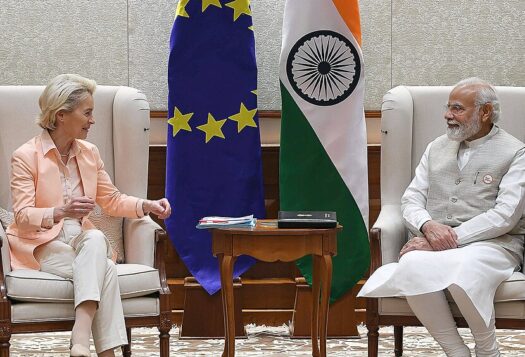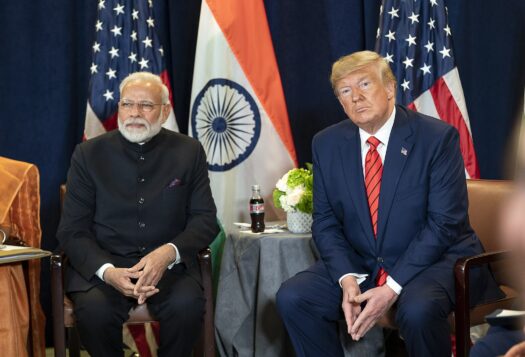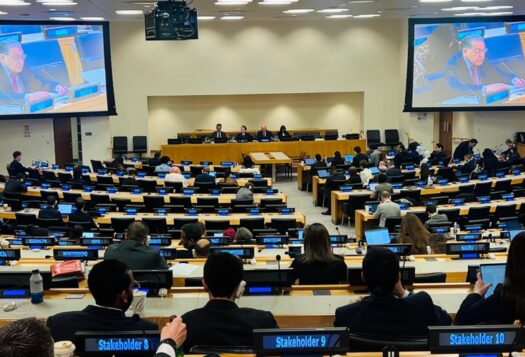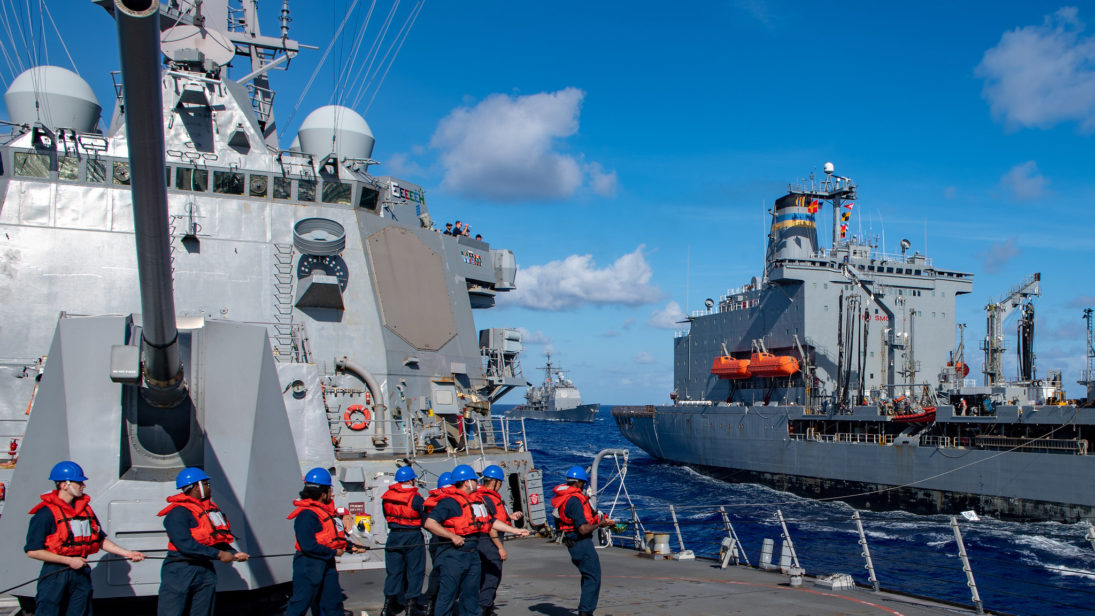
On January 3, 2020, as United States’ military strikes killed Iran’s Major General Soleimani in Baghdad, the foreign policy world buzzed with speculations about its implications for Washington’s nascent Indo-Pacific strategy. There were concerns that the United States would be pulled back into the Middle Eastern abyss, deflecting its attention and resources away from an increasingly aggressive China in the Indo-Pacific. Analysts speculated that this could trigger a rethink on the Indo-Pacific postures of regional powers, including India. There, much political capital had been spent prevailing over skeptics, who saw the Indo-Pacific in the context of India playing “second fiddle” to an unreliable United States—and, as India’s former Foreign Minister said, “fight[ing] America’s wars.”
Indo-Pacific partnerships appear to have only strengthened over 2020. Unprecedentedly negative views on China and tensions across the Indo-Pacific theater helped cement these partnerships. As the policy community observes the Biden administration’s approach to the strategy, the pandemic-battered countries financing their Indo-Pacific objectives has emerged as a key challenge.
Widening Schisms: Annus Horribilis, China, and the Indo-Pacific
The gradual policy embrace of the Indo-Pacific concept was aided by a growing convergence in the worldviews of countries such as India, Japan, the United States, and Australia—chiefly, their shared (but often silent) concerns about China’s aggressive rise. The events of 2020 only accentuated these concerns, giving their partnership a powerful fillip.
On the same day as Soleimani’s killing, Chinese authorities sent reports to the World Health Organisation about a “pneumonia of an unknown etiology” infecting people in Wuhan-presumably weeks after covering up the story of what would then go on to become our times’ Great Disruptor. The January of misinformation quickly gave way to a terrifying spring that caught Europe and North America off guard. Global shutdowns during this period paved the way for negative GDP growth (year-on-year) in India, the United States, Japan, France, Germany, the United Kingdom—countries with significant stakes in the future of the Indo-Pacific. By the end of the year, the United States and India alone had recorded over 36 percent of the world’s reported COVID-19 cases.
In the backdrop of rising COVID-19-related deaths and a creeping recession, countries in the Indo-Pacific including India, Japan, Australia, United States, South Korea saw growing public anger directed at China.
In the backdrop of rising COVID-19-related deaths and a creeping recession, countries in the Indo-Pacific including India, Japan, Australia, the United States, and South Korea saw growing public anger directed at China. What years of mercantilism, Orwellian rights abuse, and provocations in contested geographies could not do, COVID-19 managed within months: through memes and lawsuits, resentment against the authoritarian Chinese state became mainstream, arguably shaping public consensus in favor of greater cooperation among democracies in the Indo-Pacific and beyond.
As if the pandemic cover-up and the subsequent wolf-warrior style diplomacy were not enough, 2020 also saw tensions simmering across Indo-Pacific flashpoints, including in the South China Sea. Elsewhere, there was an unprecedented aggravation in hostility. Chinese vessels sailed close to the Senkaku/Diaoyu/Diaoyutai islands on all but 33 days of 2020. This year also saw the most PLA intrusions into Taiwan’s air defense identification zone (ADIZ) since 1996. The ongoing India-China Himalayan standoff brought relations to the lowest point in over half a century, further widening the historic trust gap between the two countries. Australia’s exports to Beijing took the bullet for Canberra’s call for an independent inquiry into the origins of the coronavirus. China’s relations with the United States continued to deteriorate with the Trump administration taking punitive measures vis-a-vis Tibet, Taiwan, Hong Kong, and furthering economic decoupling. China became central to policy debates during this critical election year in the United States.
With hardened views on Beijing for its particularly negative role in the pandemic and as a result of an increasingly deteriorating security situation in the region, China had set the tone for closer cooperation in the Indo-Pacific in 2020.
2020 Woes Strengthen Indo-Pacific bonds
Steady deliberation over recent years has led many regional Indo-Pacific powers, including India, the United States, Japan, Australia, ASEAN, and France, to articulate their vision of the Indo-Pacific and forge bilateral, minilateral, and multilateral partnerships to advance it. The events of 2020 only proved to be a potent catalyst for a wider acceptance of this strategic framework and greater cooperation within it. Notwithstanding restrictions posed by the pandemic, the Indo-Pacific received a tremendous diplomatic impetus.
Despite India having earned its share of notoriety for its reticence towards the Indo-Pacific strategy, improved ties between India and its partners are what placed policy weight behind this strategic concept. This trend continued in 2020. India ramped up its institutional capacity to deal with challenges in the region and worked towards enhancing the ambit of cooperation with key partners. The year started with a high-powered thumbs up to U.S.-India ties in the Indo-Pacific in the form of President Donald Trump’s visit to India. The two sides signaled that their shared strategic interests in the Indo-Pacific had acquired a level of invincibility against the long-standing thorns in their ties.
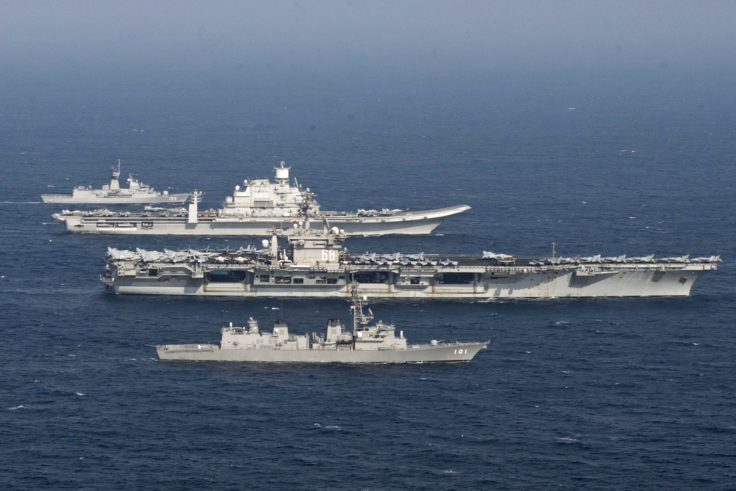
Subsequently—with the signing of a logistics pact with Australia and Japan in June and September respectively—India finished laying the elementary framework for further defense cooperation with its Quad partners in the Indo-Pacific. Delhi also continued to work on enhancing the interoperability of its navy with those of its Quad partners with passage exercises in the Western Indian Ocean with Australia and Japan, and with the United States off Andaman and Nicobar Islands. Australia returned to the Malabar naval exercise with India, the United States, and Japan after a gap of 13 years. Topped with the second Quad ministerial meeting in Tokyo, the year saw the informal coalition establish greater relevance.
Beyond the Quad, 2020 saw the Netherlands and Germany joining France in outlining a European outlook of the region. Efforts were also made to expand the club of Indo-Pacific stakeholders and partners by reaching out to the United Kingdom, the Maldives, and Bangladesh.
In addition to the insistence on working to keep the Indo-Pacific free and open, the pandemic-driven supply chain disruptions drew renewed attention towards keeping the Indo-Pacific “resilient,” with India, Japan, and Australia launching the Supply Chains Resilience Initiative in effect to reduce the region’s manufacturing dependence on China.
In the long-term, fundamental questions remain about the post-pandemic ability of Indo-Pacific countries to deliver on the implementation of their Indo-Pacific strategy.
The year also saw Japan’s Prime Minister Shinzo Abe, a key pioneer of the Indo-Pacific, resign—raising concerns about a “gigantic shake-up” of the region’s security landscape. Instead, Japan’s new Prime Minister signaled his intention to carry forward the Abe legacy. As Japan tries to balance a hard approach on security concerns with China with a more cautious one on trade, 2021 will throw more light on how its Indo-Pacific strategy accommodates this dichotomy between furthering economic integration with China while working to check Chinese actions in the Indo-Pacific. As in other Indo-Pacific capitals, Tokyo’s decisions on this will get influenced—to some extent— by the course of U.S.-China ties under the Biden administration.
Looking Ahead
There is an ongoing debate about whether the Indo-Pacific strategy will live past a change of administration in the United States. It remains to be seen how the shift from the Trump administration’s “Free and Open” Indo-Pacific strategy to the incoming Biden administration’s quest to ensure the region’s “Security and Prosperity” materializes. If “security” and “prosperity” with a focus on trade and a reset on decoupling with China discounts the importance of safeguarding a rules-based order, this policy could push Indo-Pacific middle powers to diversify their relationships. Alternatively, “security” and “prosperity” in the Indo-Pacific might translate into a clearer, policy-heavy, rhetoric-light, and more inclusive Indo-Pacific approach (not focused on partnering with democracies alone).
Indo-Pacific powers continued to invest in influence in the region through infrastructure financing and proactive health diplomacy initiatives despite the year’s economic conditions—a testament to the growing importance of the Indo-Pacific. In the short term, defense budgets are also unlikely to bear the brunt, considering the continued volatile security situation across the region.
In the long-term, fundamental questions remain about the post-pandemic ability of Indo-Pacific countries to deliver on the implementation of their Indo-Pacific strategy. The road to recovery would require Indo-Pacific partners to work closely on emerging areas of cooperation including, critically, vaccine manufacturing and roll out.
***
Image 1: U.S. Indo-Pacific Command via Flickr
Image 2: U.S. Pacific Fleet via Flickr
